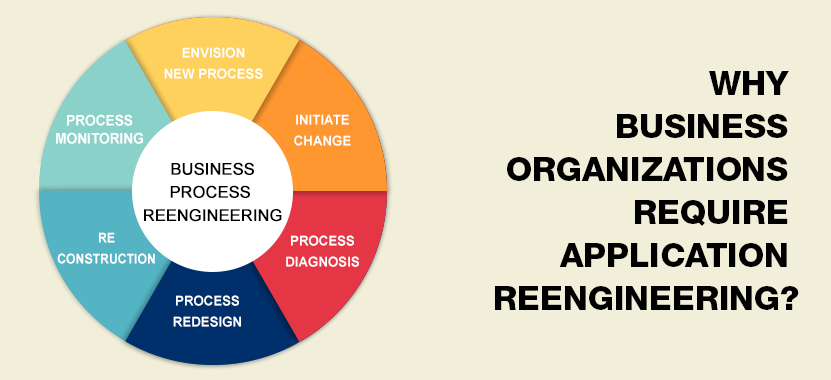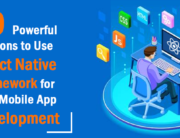Nowadays, technology is changing at a fast pace and businesses which fail to adopt the state of the art systems equipped with the latest technology, are likely to lose out to businesses which embrace them. Still, some business organizations continue to use legacy systems up to this day.
What are legacy systems?
Legacy systems are old applications, built using obsolete programming languages and coding methodologies. These systems face various issues like less performance, stability and security, system overload, incompatibility with modern platforms, inability to scale up for managing an increased user base, less user friendly designs and out of control. Also, they cannot be made portable on new platforms. As a result, business organizations are unable to address their varying business needs with the use of legacy systems.
Business organizations using legacy systems have to deal with increased maintenance costs and rising total cost of ownership. Also, they do not get support from the software providers who originally built them. Managing and maintaining legacy systems is a tough job for their programmers and maintenance engineers. It is a challenge for the organizations to find the employees with the right skills to work with these systems.
In spite of such issues, limitations and challenges, it is neither possible nor wise for businesses to get rid of their legacy systems. The reason is they contain years of experience, knowledge and data that is crucial for the functioning of businesses.
So where lies the solution?
The solution lies in application re-engineering.
Application reengineering involves rethinking the design of legacy applications that are currently used by businesses and updating their design and development. This helps to improve or transform these applications. So they can be understood and controlled as well as used afresh. Reengineering legacy applications enhances their performance, thus resulting in increased efficiency and productivity for the concerned businesses. This also reduces the time to market for the applications. Reengineering them enables businesses to achieve their objectives and gain a strategic edge over rival businesses.
For redesigning and redeveloping legacy applications of a business, dot net developers of a software development company make use of advanced features and employ the latest languages, technologies, frameworks and platforms. They also add new functionalities, improve UX design and optimize the architecture of the applications for redeveloping them. They thus migrate the existing legacy applications to a new base without altering their essence.
Before going ahead with reengineering a legacy application of a business, the experts of the software development firm will test whether reengineering it is really required and justified. After its necessity and validity is proved, the business can go ahead with its decision to reengineer the application.
Application Reengineering Process

For reengineering legacy applications of a business organization, the developers will implement the application reengineering process.
The application reengineering process constitutes the following:-
Assessment
The development team will assess the existing legacy systems used by the business organization for developing the plan for re-engineering the systems. The team will choose the IT solution which ideally matches the organization’s needs and vision and helps it realize the maximum return on investment. It will recommend or decide on an appropriate technical architecture of the systems, assess build or buy opportunities and consider whether to choose one-time or incremental system reengineering for them.
Want to reengineer your applications? Matrid Technologies, a software development company offers specialist developers for businesses of all fields. CONTACT US TODAY!
Upgrading the languages
The developers will make use of tool-based automated conversions to re-engineer the outdated programming languages within the legacy systems into modern technologies for meeting the changing business needs of the organization.
Converting user interface
The legacy applications have an old interface which affects user experience and usability of the applications. So developers will re-engineer their user interface through the look and feel enhancements and by rewriting and re-designing the interface with the use of different technologies. This will make the applications’ interface easy to use, smooth and slick.
Making changes to the database
As legacy applications have an old database, the data contained in them may be inaccurate and anomalous. For this reason, the developers will re-engineer the database to improve it. They will use the proper tools, techniques and processes as well as modern technologies for re-engineering it. So the data will become free of errors and outdated constructs. Also, it will become normalized, optimized and well distributed. The developers will also test and implement the new data model or database to ensure the recommended design changes are successfully applied to the database.
Upgrading of technology
The developers will also work towards analysing and improving the business processes of the organization for improving its efficiency. They will identify its main business processes which are responsible for hampering the achievement of its return on investment. The developers will re-engineer the technology used by the organization with least customization, so as to let it achieve increased business gains.
Stages of Application Re-engineering
There are various stages of re-engineering legacy applications, namely:
- Data collection
- Reverse Engineering
- Forward Engineering
- Restructuring
- Redocumentation
- Translation
Also Read:
How To Successfully Execute Your Application Migrations
Benefits
Let’s now discover the advantages of reengineering legacy applications.
1. The applications are made scalable. So they can be scaled up for managing a bigger user base.
2. They are able to give higher performance.
3. Operational issues associated with legacy applications are effectively resolved.
4. The applications become more user friendly and they are able to provide an enhanced user experience.
5. The portability of the applications improves, so they can be ported on new platforms.
6. The cost of maintaining old, poorly documented and out of control legacy applications gets reduced. Also, the total cost of ownership of the applications is lowered.
7. The applications and staff of business organizations can be best utilized.
8. Re-engineering of applications leads to better business operations.
9. The business processes can be automated, integrated, atomized and streamlined.
10. Dynamic business needs can be met.
11. The licensing and support issues related to the use of older technologies can be alleviated.
12. The value of legacy applications can be retained or enhanced.
13. The scalable platforms used in the applications help to provide businesses increased flexibility for responding rapidly to changes taking place in the market.
If you too want to avail these benefits of reengineering your existing legacy systems, you should hire dot net developer of Matrid Technologies, an experienced and established software development company.








Leave A Comment